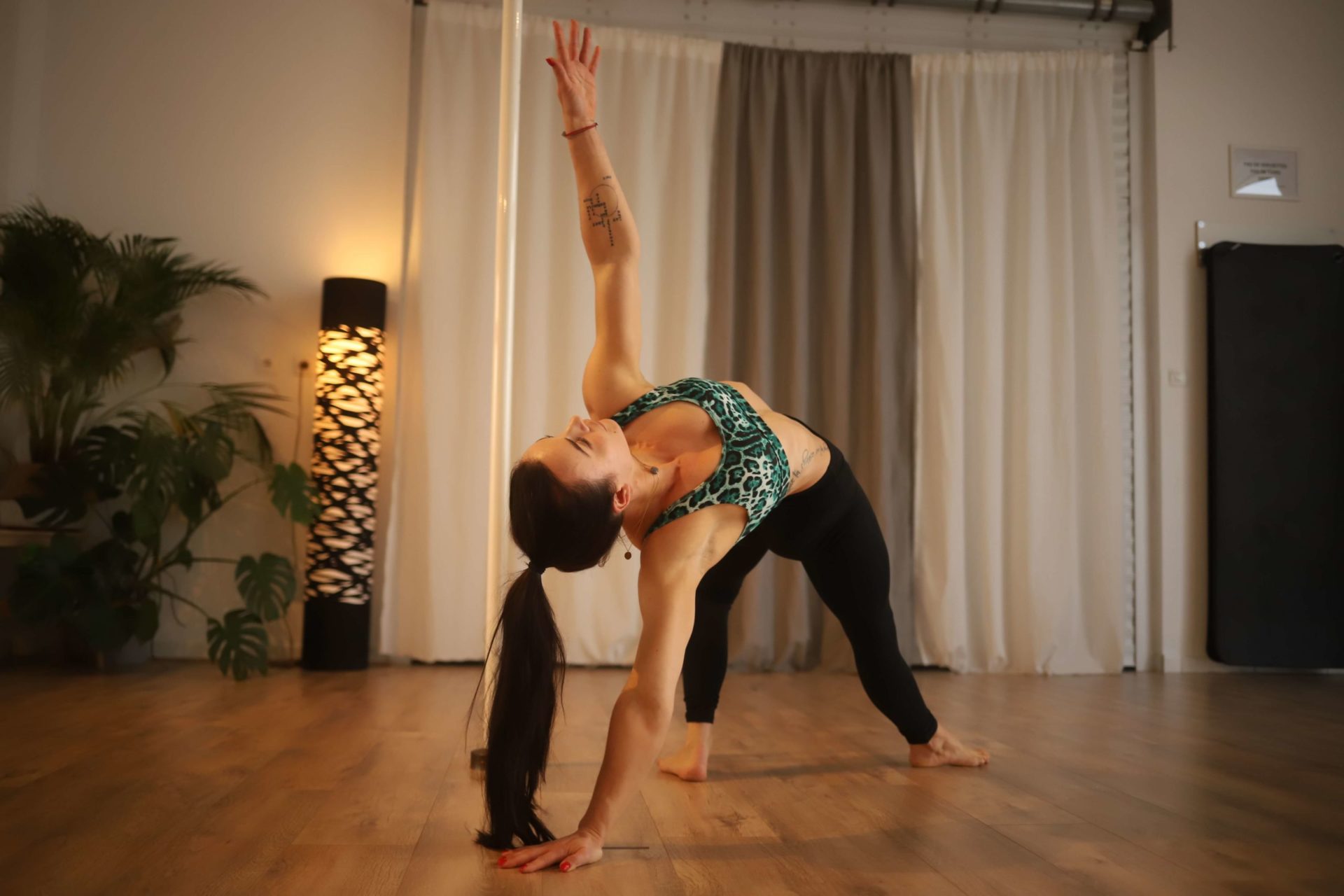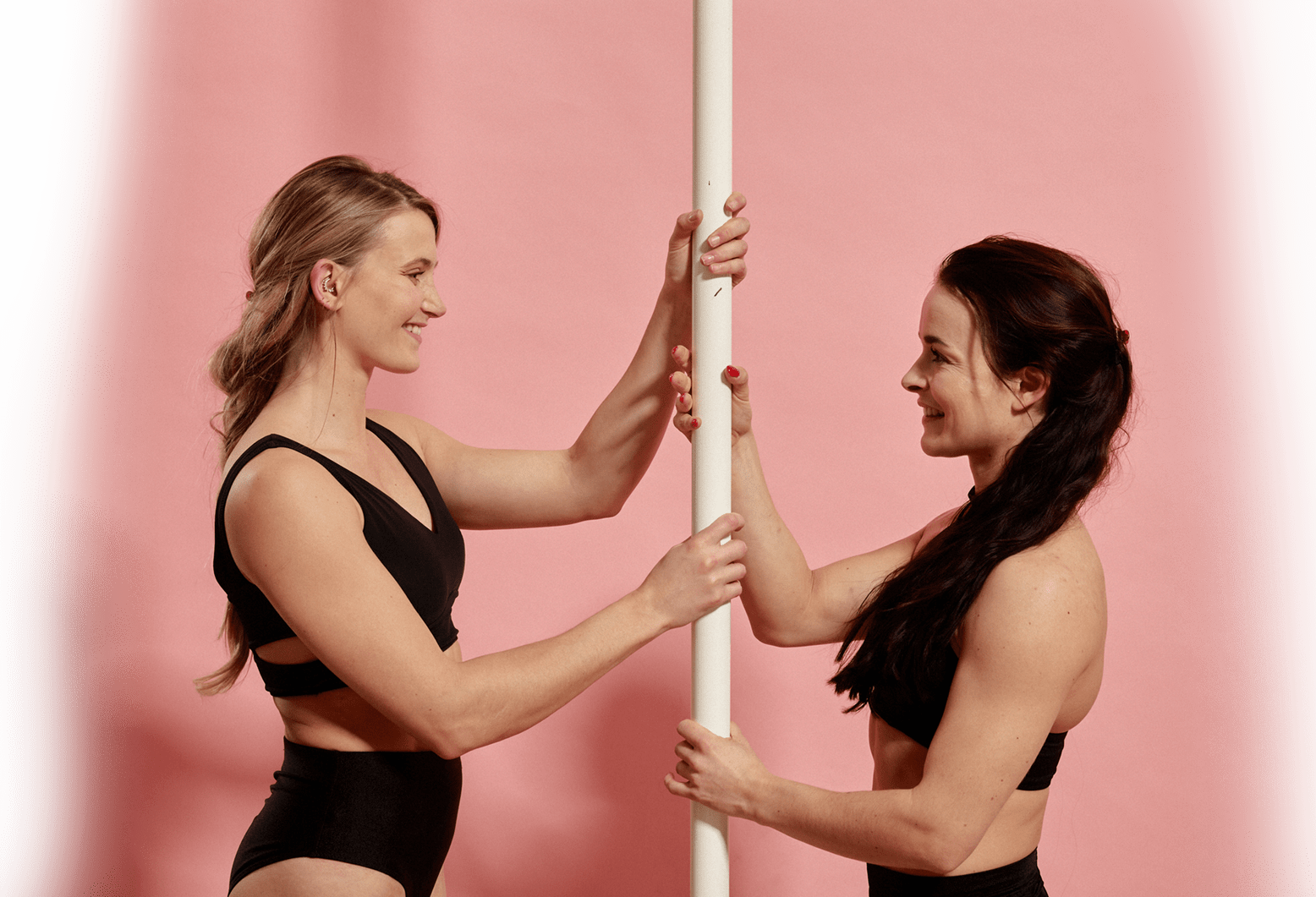
Progressing in a discipline requires a minimum of preparation. You will find comprehensive content on our video platform; and in this article we will help you using it optimally.
Whatever your level, the practice of pole dance is subjected to some essential rules. Beginner level? We have prepared a specific article for you: How to train – Beginner
What happens during a session ?
Be sure to prepare the tricks you are going to learn. 4 or 5 is a good ratio to start and to get used to the movements. At an intermediate level, you can train to do sequences. The duration of a session can go from 1 hour to 1 hour 30 minutes depending on your shape of the day and your level. This will include: A 20 to 30 min warm-up, a bunch of strengthening exercises: conditioning to pole, technical learning of beforehand predefined tricks, as well as a cool down.
How to progress ?
After warming up and conditioning to pole, you will work on technique. Each tutorial is detailed as if we were with you in class. Do not hesitate to watch it during your practice and therefore to pause the video and try the trick.
Repetition: take the time to do and redo the tricks several times. This will allow you to anchor the movement and its technique, but also to develop your strength. Keep in mind that just because you pull off a trick once doesn’t mean you have mastered it. Technique is learned through repetition! Work on both sides as much as possible in order to have stable muscles.
Don’t hesitate to get back to tricks from lower levels and to reinstate certain tricks, seen previously, in order to check that they have been well acquired. It’s best to incorporate a maximum of one or two new tricks per session.
You will be surprised at the progression from one workout to the next, the body and brain need time to “digest” information.
Trick mastered !
A trick is mastered when: The placements are clear, the feet are extended and the position can be hold for a while (depending on the mode you are on: spinning mode or static mode).
Do not hesitate to film yourself so that you can correct yourself. You can also set a mirror in your pole room although the video remains the best mean, used by all pole athletes in the world!
Good training or bad training ?
No rule sets the quality of the session! Pole dancing is a very demanding artistic sport. We are human; sometimes trainings are laborious and other times progresses are amazing. Keep in mind that there are no rules to progression and that the pleasure of practicing is the only thing that counts. Every workout is important; those that are effective, as well as those that have not produced visible results. The body is at work anyway. Each pole dancer has their own skills, their own athletic past, providing them or not with facility. Do not compare yourself, make your way through and above all congratulate yourself for having completed your session, see your progress, however small, and see how far you have come!
Do not hesitate to go back to tricks that seem easier to you if you feel that you are no longer enjoying yourself! We all experience standstills, these are necessary phases for the construction of solid foundations, and this at all levels.
Rest !
Rest phases are essential for your muscles to build and develop. When starting a new sport, it is imperative to adhere to a healthy training pace. It is not by practicing every day that you progress faster. Rest time is part of training. Again, there is no ideal pace and each pole dancer has their own pace. Just avoid training 7 days a week.
For example, for a non-athletic person starting pole dance, we would recommend doing 2 pole dancing sessions and one stretching or muscle building session per week at most. We believe consistency is key, so planning one session per week seems to be a minimum to ensure progress, two sessions being ideal.
In any case, learn to listen to your body: do you have muscle ache, do you feel fit or tired? Do you feel pain? Respect your pace!



